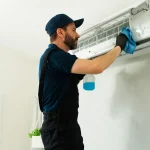The condition of your septic tank isn’t something most homeowners want to think about—until they have to. Waiting until your system backs up or starts to smell can set you up for an inconvenient health hazard that you will feel and smell. Pumping your septic tank regularly is one of the easiest ways to avoid costly repairs and keep your home running smoothly.
If you’re new to septic systems or just want to make sure you’re doing things right, this guide from an expert in drain field restoration in Charlottesville, VA, breaks it all down.
What Is Septic Tank Pumping?
Septic tank pumping is the process of removing solid waste and sludge that builds up over time in your tank. This keeps your system working efficiently and prevents backups or system failure. Think of the service as being similar to cleaning out a lint trap—skip it too long, and things clog up fast.
In plain terms:
- A vacuum truck suctions out waste
- The tank may be rinsed and refilled with clean water
- Sometimes, the technician adds bacteria or enzymes to help break down future waste
Without regular pumping from drain field restoration services, your tank can overflow or send waste back into your home.
Why It’s So Important
Ignoring your septic system is asking for trouble. Waste builds up gradually and will eventually clog the system, leading to bad smells, slow drains, or even yard flooding. Regular pumping removes the waste and resets your system.
According to an experienced septic system inspector, “The best time to pump your septic tank is before you notice a problem—not after.”
How Often Should You Pump?
Most households should have their septic tank pumped every 3 to 5 years. However, your specific schedule depends on your tank size, household size, and water usage habits. If your system is older or you host guests often, you may need to pump more frequently.
General pumping guidelines:
- 1–2 people in a home: Every 5 years
- 3–4 people: Every 3–4 years
- 5+ people or heavy water use: Every 2–3 years
For a more detailed explanation, be sure to ask your technician for a custom recommendation after your first service.
Signs You Might Be Overdue
Sometimes the system itself will let you know it’s time to have it pumped. Don’t ignore these signs. Acting early can save you from bigger repairs.
Watch for:
- Gurgling noises in your plumbing
- Slow drains or water pooling in the yard
- Unpleasant smells near the tank or drain field
- Sewage backup in toilets or tubs
If you notice any of these, call a septic service immediately.
What Actually Happens During Pumping?
Here’s a snapshot of the process from start to finish:
- A technician arrives with a vacuum truck
- They locate the septic tank and uncover the lid
- A hose is inserted to suction out the waste
- The contents may be stirred to break up solids
- The technician rinses the tank and may refill it
- A biological additive may be applied
The whole process usually takes around an hour or two to finish, depending on the size and condition of the tank.
What Does the Technician Do?
Technicians will inspect your system for cracks, wear, or other issues that could lead to failure later on. The attending team will also check valves, baffles, and filters to make sure everything is working properly.
Good technicians will:
- Locate and safely open your tank lid
- Explain what they’re doing
- Recommend any follow-up steps if problems are found
How to Prep Your Property Before the Service
Getting your property ready ahead of the service makes the job faster and safer. The technician needs clear access to your septic tank and lid. A few simple steps can make a big difference.
Preparation checklist:
- Locate the septic tank lid ahead of time
- Clear any brush, yard decor, or debris
- Make sure pets are indoors or secured
- Let the company know if it’s been more than five years since the last pump
Unsure where your tank is located? A professional from a drain field restoration company can help find it—sometimes for a small extra fee.
Don’t wait for your septic system to fail. Regular pumping is one of the easiest ways to protect your home, save money, and avoid major disruptions. Schedule a service with a trusted local provider. It’s a simple job that keeps your whole household running right.














